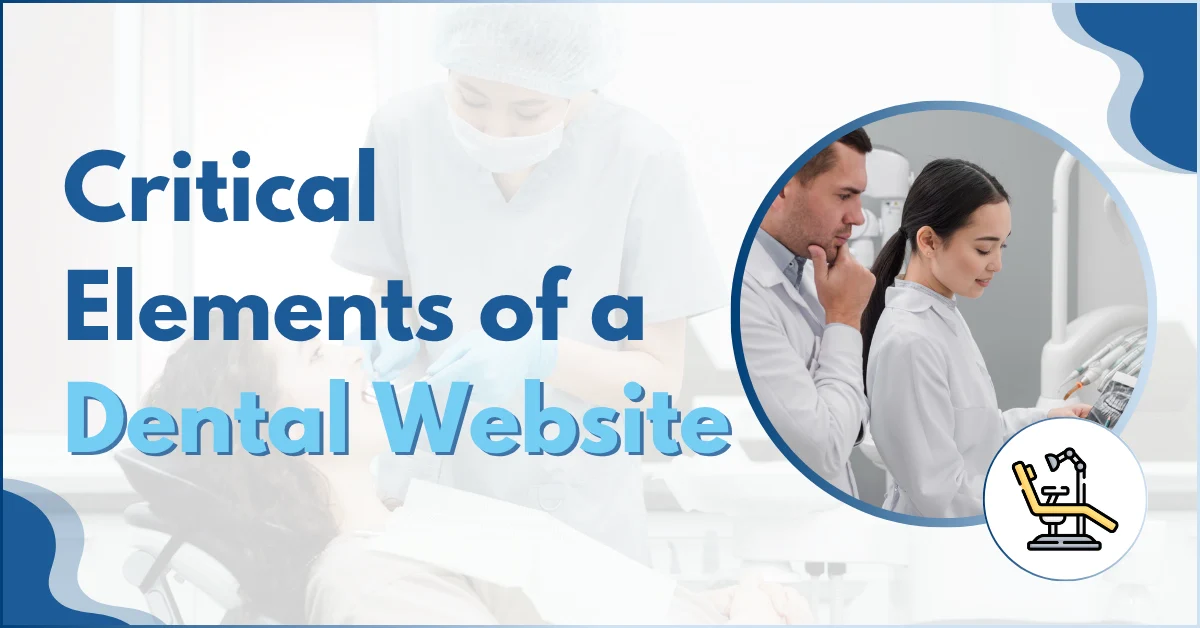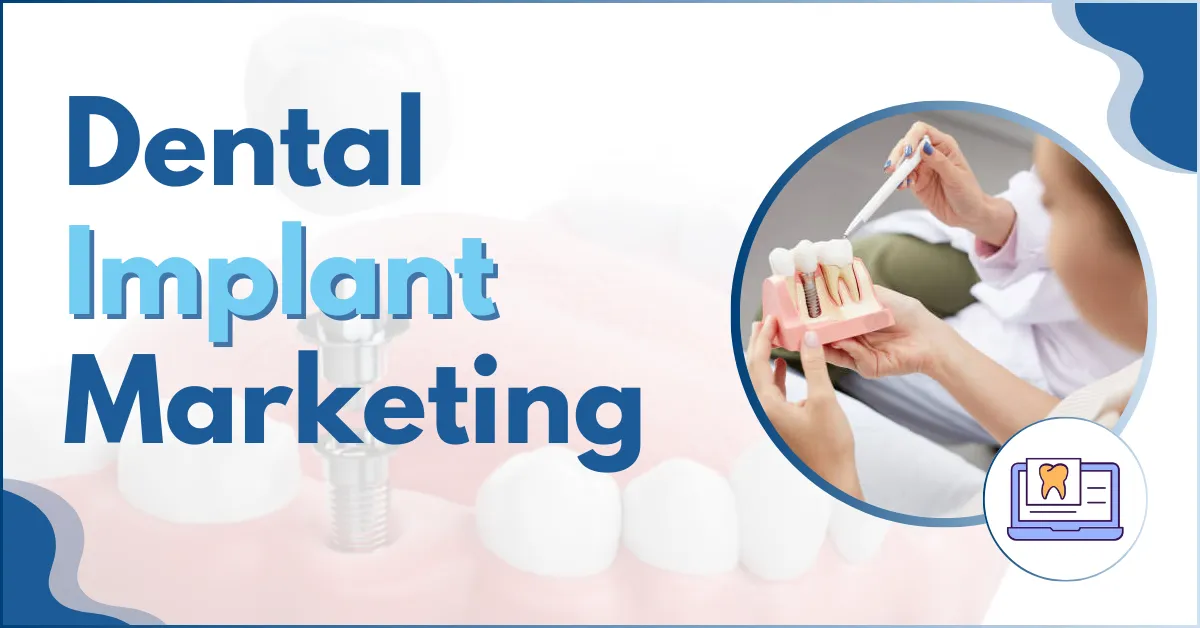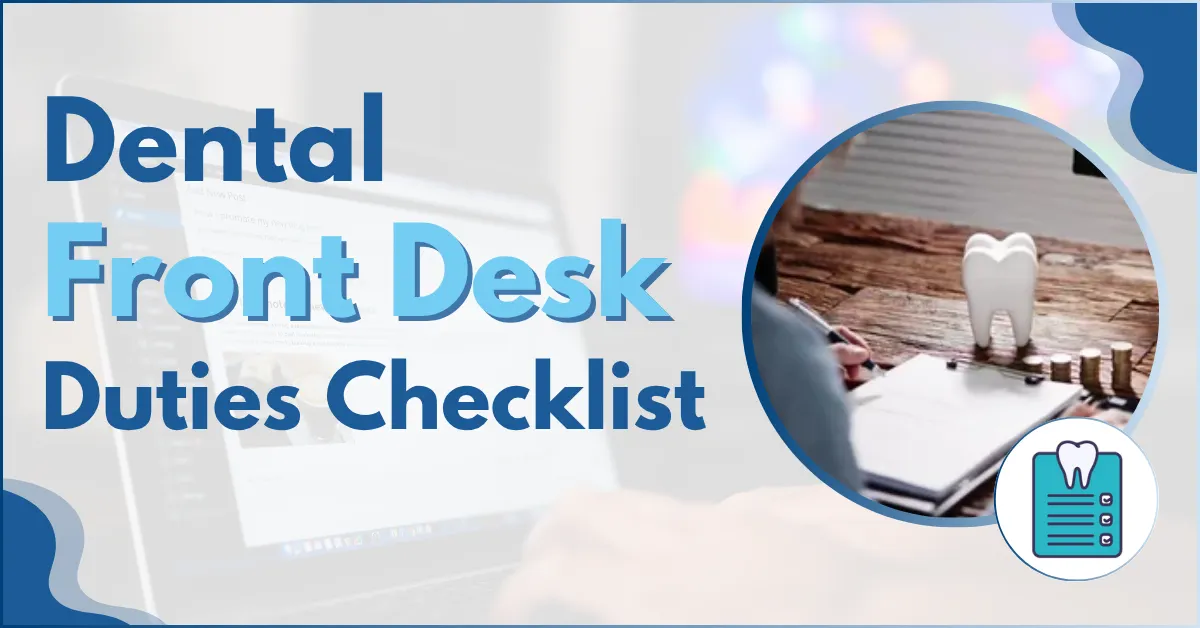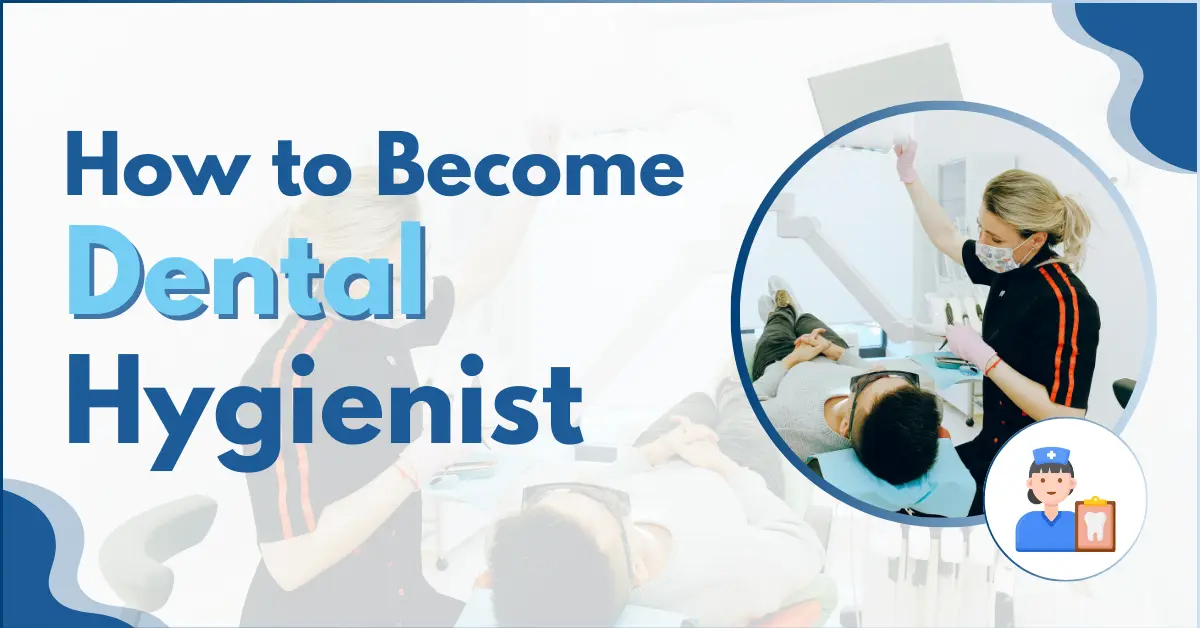If you are a dentist, you probably already know how important it is to have patients trust you before they even step into your clinic.
And in this era, that first trust usually starts online, with your website. According to Zocdoc, 69% of patients prefer to book their dental appointments online. But the thing is, just having a website is not enough anymore.
It needs to work for you, answer questions, make booking easy, and actually make people feel confident about choosing you as their dentist.
I have seen many dental websites that miss the mark and either look outdated, don’t provide the right info, or confuse visitors instead of helping them. That’s the reason why I am sharing these 18 critical elements of a dental website to boost conversion.
If you want your website to do its job properly and help grow your practice, this blog is for you. Let’s get straight to those elements
18 Critical Elements of a Dental Website

These 18 essential elements are the building blocks that make your dental website effective:
1. Appointment Booking for Patient Convenience
People want to book appointments easily online. Your website should have a simple booking system that works on phones and computers.
It should ask only for essential details and confirm appointments right away. This saves your staff time and makes patients happy.
2. Build a Fast & Easy-to-Navigate Website
If your website takes more than 3 seconds to load, you could lose up to 40% of visitors. That’s almost half your potential patients gone, before they’ve even seen what you offer.
Ways to make your site faster:
Easy navigation is just as important as speed. Once the site loads, visitors should instantly know where to go next. They should be able to:
Navigation tips:
3. Make It Mobile-Friendly
Here is a reality you can not ignore that most patients will visit your site from their phone.
If your website doesn’t adapt to mobile screens, you’ll lose both patients and Google rankings.
Benefits of mobile-responsive design:
Use thumb-friendly navigation, place menus, buttons, and booking forms where they’re easy to tap without stretching fingers.
Remember, a mobile site isn’t just a smaller version of your desktop site. It should be optimized for quick actions, such as:
4. Search Engine Optimization (SEO)
SEO ensures your website ranks high on Google for relevant dental searches, driving organic traffic.
Key SEO Strategies:
- Use tools like Google Keyword Planner, SEMrush, or Ahrefs to find high-intent keywords .
- Optimize title tags, meta descriptions, headers (H1, H2), and content with these keywords naturally.
- Target local SEO keywords (e.g., “dentist near me,” “affordable dental implants [City]”).
- Ensure fast loading speed (use Google PageSpeed Insights).
- Mobile-friendly design (Google prioritizes mobile-first indexing).
- Secure HTTPS protocol (SSL certificate required).
- Clean URL structure (e.g., yourclinic.com/dental-implants instead of yourclinic.com/page123).
- XML sitemap & robots.txt for search engine crawling.
- Google Business Profile (GBP) Optimization: Keep NAP (Name, Address, Phone) consistent across directories.
- Encourage patient reviews on Google, Yelp, and Healthgrades.
- Local backlinks from dental associations, local blogs, and chambers of commerce.
5. Clearly Show Your Services
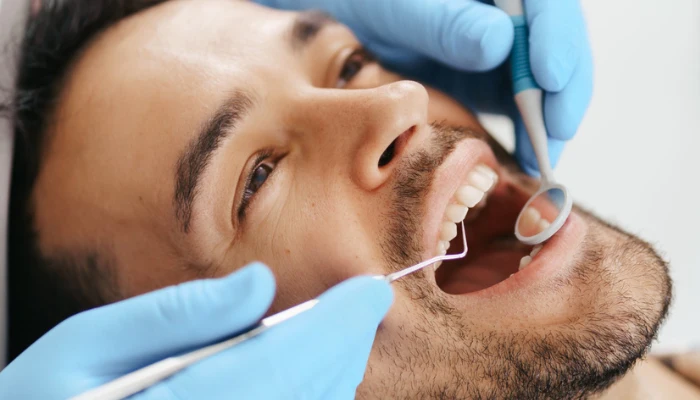
Patients want to know exactly what you offer, and they don’t want to dig for it.
Best practice: Create one dedicated page per service so patients can learn more, and so Google can index each page separately for SEO.
Each service page should include:
6. Add Dentist Bios that Build Trust
Patients like to know who will treat them. Add a page with biographies of your dentists, including their experience, qualifications, and specialties.
Include photos to make it more personal. This builds trust and helps patients feel comfortable.
7. Patient Testimonials in Different Formats
People trust reviews from other patients more than advertisements. Show real testimonials on your website. Use different formats like written reviews, star ratings, and videos. Display them prominently so new visitors see the positive experiences of others.
Different people prefer different types of reviews. Some like reading, others like watching videos or seeing star ratings. Including multiple formats increases trust and engagement.
8. Add Optimized, High-Quality Content
Great content is what turns curious visitors into confident patients. It also signals to Google that your site is authoritative and worth ranking higher.
Content tips:
Keep your blog updated with helpful articles. Over time, this will boost your SEO and establish your clinic as a go-to resource for dental care advice.
9. Add Clear Calls-to-Action (CTAs)
A Call-to-Action tells visitors exactly what to do next. Without them, your website is just a digital brochure , not a conversion tool.
Best CTA practices:
10. Enable Online Appointment Booking
Convenience is king. If patients can book their appointments without picking up the phone, they’re more likely to do it.
Your booking form should:
Pair online booking with automated reminders to reduce no-shows.
11. Structure Your Website for Patients
Your site’s structure impacts both patient experience and Google rankings.
Core pages your dental website should have:
12. HIPAA Compliance for Data Privacy
Patients trust you with their personal and health information. Your website must protect this data according to HIPAA (Health Insurance Portability and Accountability Act) rules.
Use secure forms, encryption, and privacy policies to keep data safe.
13. Insurance and Payment Information Page
Make it easy for patients to know which insurance providers you accept and what payment options you offer.
Include FAQs about insurance coverage and billing to reduce confusion before their visit.
14. Easy Access to Digital Patient Forms
Online booking forms can boost your appointment conversions by up to 25%, making it easier and faster for patients to schedule visits (Source: BookingBug). Allow new patients to download or fill out forms online before their first visit. This saves time and helps patients prepare.
Make forms easy to find and fill out on both computers and mobile devices.
15. Regular Updates and Maintenance for Accuracy
Keep your website updated with current information about your services, staff, and policies.
Check regularly for broken links, outdated content, and security updates. A fresh website shows professionalism and care.
16. Show Your Team & Behind the Scenes of Your Dental Office

Patients choose dentists they feel comfortable with, not just the one closest to home.
Ways to show your human side:
17. Highlight Your Brand with Your Story
Your About us page is your chance to tell visitors who you are beyond the dental chair. This is where you share your passion, your values, and why you’re the right choice.
Here is what to include:
A strong About Us page builds real trust. It helps potential patients feel comfortable before they even walk through your door
18. Add Extra Features Patients Love
Sometimes it’s the little things that set you apart. Consider adding:
Why Your Dental Website is the Cornerstone of Patient Growth

Your website is often the first place new patients meet your practice. A well-designed website builds trust and answers common questions, making it easier for patients to choose you.
If your website doesn’t work well or doesn’t show what you offer clearly, people will go elsewhere. A good website helps your practice grow by bringing in more patients every day.
Core Principles Behind a High-Converting Dental Website
Here is what you must consider before creating the website:
Understanding Patient Psychology in Web Design
Psychology means understanding how people think and feel. You can use this to make your dental website better and help more people become your patients.
How Patient Psychology Helps Your Website
Here are some easy ways to do this:
Using these simple psychology ideas on your dental website helps more people contact you and become patients.
How Do First Impressions of Your Dental Website Influence Appointment Decisions?
People judge your practice based on your website’s look and feel. Clean design, clear information, and visible contact details help build trust.
If the homepage looks professional and welcoming, visitors will stay and book an appointment.
What Does High-Converting Dental Website Mean?
Before we start talking about design elements and SEO tricks, it’s important to understand what “high-converting” actually means.
A conversion happens when a visitor takes a desired action, like booking an appointment, calling your clinic, filling out a form, or even subscribing to your newsletter.
Example: If 100 people visit your site and 12 make an appointment, your conversion rate is 12%.
A higher conversion rate means your website is doing an excellent job of convincing visitors to take the next step. But here’s the catch: every dental practice is different.
For some, a “conversion” might mean same-day appointment bookings. For others, it might be getting the patient’s contact information so the receptionist can follow up.
Why this matters:
If you don’t know what your primary goal is, you won’t know how to design your site for it. A high-converting website is built with the end action in mind from the very beginning.
Wrapping Up
Your dental website is more than just an online brochure, it’s your most powerful patient acquisition tool.
By focusing on critical elements of a dental website such as speed, mobile design, clear service pages, real reviews, easy booking, and personal branding, you can create a site that attracts more patients and keeps them coming back.
With the right design and strategy, it can work for you 24/7, booking appointments while you sleep.
If you want a site that not only looks great but also brings in real bookings, investing in professional dental website design is worth every rupee.

